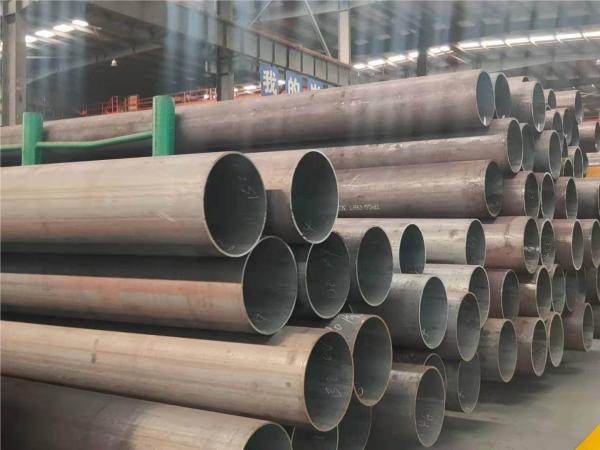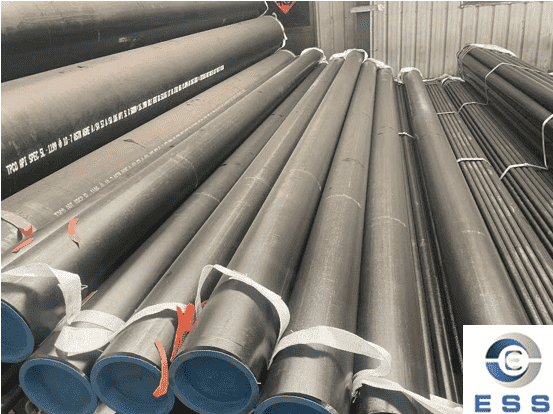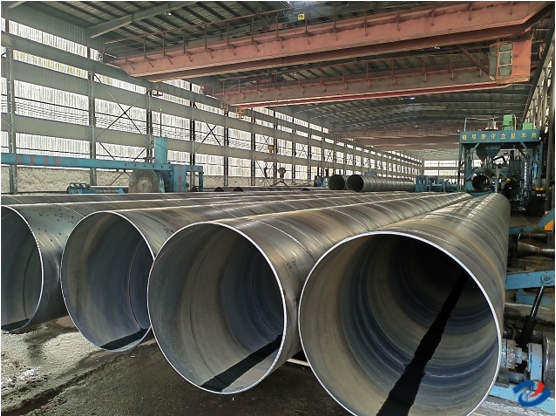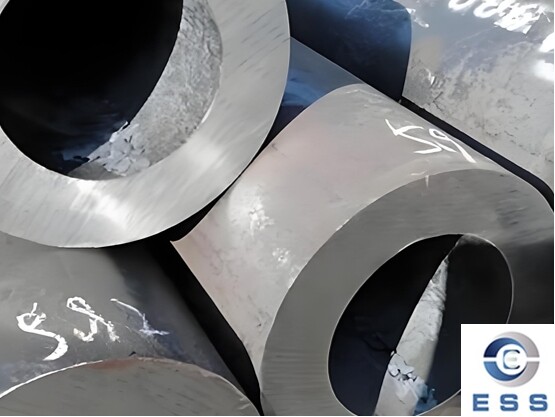Seamless carbon steel pipes are widely used in various industries due to their exceptional strength, durability, and corrosion resistance. These pipes are manufactured through a unique process that involves heating a solid steel billet to a high temperature and then rolling it to form a hollow tube. In this article, we will provide a detailed overview of how
seamless steel pipes are made, including the different stages of the manufacturing process and the equipment used.

Seamless Carbon Steel Pipe
Stage 1: Melting
The first stage of manufacturing seamless carbon steel pipes involves melting the steel. The steel is melted in a furnace, which is heated to a temperature of around 2,000 degrees Fahrenheit. The furnace is typically fueled by natural gas or electricity and is designed to melt large quantities of steel at a time.
The furnace is lined with refractory materials that can withstand the high temperatures and prevent the steel from sticking to the walls. The steel is loaded into the furnace in the form of scrap metal or iron ore, along with other additives such as limestone, which helps remove impurities from the steel.
Once the steel is melted, it is poured into a ladle and transported to the next stage of the manufacturing process.
Stage 2: Casting
The second stage of manufacturing seamless carbon steel pipes involves casting the steel into a solid billet. The molten steel is poured into a mold, which is typically made of cast iron or steel. The mold is designed to shape the steel into a solid billet, which is a long, cylindrical piece of steel that is used as the starting material for making seamless carbon steel pipes.
The mold is cooled using water or air, which helps solidify the steel and prevent it from sticking to the walls of the mold. Once the steel has solidified, the mold is opened, and the billet is removed.
Stage 3: Heating
The next stage of manufacturing seamless carbon steel pipes involves heating the solid billet to a high temperature. The billet is heated to a temperature of around 2,200 degrees Fahrenheit, which softens the steel and makes it easier to work with.
The heating process is typically done in a furnace, which is similar to the one used for melting the steel. The furnace is designed to heat the billet evenly and prevent it from warping or cracking during the heating process.
The heating time depends on the size and thickness of the billet, but it typically takes several hours to heat the billet to the desired temperature.
Stage 4: Rolling
Once the billet is heated, it is rolled to form a hollow tube. The rolling process involves passing the billet through a series of rollers that gradually reduce its diameter and thickness. The rollers are typically made of steel and are designed to apply pressure evenly to the billet, which helps shape it into a seamless tube.
The rolling process may involve several passes through the rollers, depending on the size and thickness of the tube. Each pass through the rollers reduces the diameter and thickness of the tube, which helps shape it into the desired size and shape.
The rolling process may also involve other equipment, such as a piercing mandrel, which is used to create a hole in the center of the billet. This hole is used as the starting point for forming the tube.
Stage 5: Cutting
Once the tube is formed, it is cut to the desired length and shape. The ends of the tube are then chamfered to ensure a smooth, seamless finish. The cutting process may involve several steps, depending on the size and shape of the tube.
The cutting process may be done using a saw, plasma cutter, or other cutting equipment. The equipment used depends on the size and thickness of the tube and the accuracy required for the cut.
Once the tube is cut, it is inspected for defects and other quality issues. Any defects are repaired or the tube is discarded if it cannot be repaired.
Conclusion
Seamless carbon steel pipes are manufactured through a complex process that involves several stages, including melting, casting, heating, rolling, and cutting. The process involves using high temperatures and pressure to shape solid steel billets into seamless tubes that are highly durable and resistant to corrosion.
The equipment used in the manufacturing process is designed to handle large quantities of steel and apply pressure evenly to ensure the tubes are formed accurately and with minimal defects. Quality control is an essential part of the process, and any defects or quality issues are addressed before the tubes are shipped to customers.
Overall, the manufacturing process for seamless carbon steel pipes is a complex and demanding process that requires specialized equipment, skilled workers, and strict quality control. However, the result is a product that is highly sought-after in various industries due to its exceptional strength, durability, and corrosion resistance.
Read more: Difference between seamless pipe and seam pipe













 Eastern Steel Manufacturing Co.,Ltd not only improve product production and sales services, but also provide additional value-added services. As long as you need, we can complete your specific needs together.
Eastern Steel Manufacturing Co.,Ltd not only improve product production and sales services, but also provide additional value-added services. As long as you need, we can complete your specific needs together.










